DARWIN, Charles Robert (1809-1882). On the Origin of Species by Means of Natural Selection . London: John Murray 1859. First edition of 'the most important single work in science' (Dibner), and 'a turning point, not only in the history of science, but in the history of ideas in general' (DSB). This copy is in its original cloth binding, and accompanied with a letter signed, apparently to an arch anti-Darwinian German botanist, Albert Wigand as well as with a portrait carte-de-visite of Darwin. Although some key observations and findings from the voyage of the Beagle acted as his initial inspiration, Darwin's ideas about the beneficial mutation of species did not cohere into the theory of evolution until his reading of Thomas Malthus's Essay on the Principle of Population in the latter half of 1838. The gestation of the theory was slow, but in 1856, following a conversation with Sir Charles Lyell about his hypothesis, Darwin was determined to bring it to a conclusion. Two years later he had composed an extended treatise entitled 'Natural Selection', some two thirds complete at 250,000 words. Then in June 1858, Darwin received a letter about evolution from Alfred Russel Wallace, who had independently arrived at similar conclusions. The two scientists issued a joint paper on the subject at the Linnean Society on 1 July. Darwin was now forced to publish, and urged on by Hooker, he condensed his big book into an 'abstract' of some 155,000 words. 'The book, stripped of references and academic paraphernalia, was aimed not at the specialists, but directly at the reading public'. Finally published as On the Origin of Species on 24 November 1859 in a print run of 1250 copies, it expounded a theory of evolution that was recognisably superior and of infinitely greater impact than all previous hypotheses explaining biological diversity. Dibner Heralds (1980) 199; Eimas Heirs 1724; Freeman 373; Garrison-Morton (1991) 220; Grolier Science 23b; Norman 593; PMM 344b; Sparrow Milestones 49; Waller 10786. Octavo-in-12s (201 x 125mm). Half-tile, folding lithographic diagram. 32-page list of John Murray's books at end, dated June 1859 [Freeman's variant 3] (half-title and title with marginal vertical crease running approx. 25mm in from the fore-edge, half-title with 22mm and 20mm tears at head and foot of gutter respectively and tiny marginal nick at top edge, title with 20mm tear at foot of gutter and tiny marginal fore-edge nick, very short marginal tear to first contents leaf, the first four leaves lightly frayed with tiny chipping at fore-edge, pp.321-2 with tiny marginal nick, a couple of leaves with faint insignificant marginal staining or finger-soiling). Uncut in original green cloth, with the ticket of Edmonds & Remnants, covers stamped in blind, spine lettered and decorated in gilt, brown coated endpapers [Freeman's variant 'a' binding], a few leaves of the index unopened (inner hinges expertly repaired, tiny insignificant splits to tailcap, corners lightly bumped); housed in a modern green morocco box. [ With :] – Letter signed (‘Ch. Darwin’), to an unnamed recipient [the German botanist Albert Wigand (1821-1886)], Down, 31 March 1874, confirming receipt of a work sent to him [volume 1 of Wigand's Der Darwinismus und die Naturforschung Newtons und Cuviers ] which the Post Office had lost, one page (202 x 128mm ), on a bifolium, the text in the hand of Emma Darwin (short splits at creasefolds); [ And :] carte-de-visite portrait of Darwin by Wesenberg & Co., St Petersburg (104 x 62mm). The letter is not recorded by the online Darwin Correspondence Project.
DARWIN, Charles Robert (1809-1882). On the Origin of Species by Means of Natural Selection . London: John Murray 1859. First edition of 'the most important single work in science' (Dibner), and 'a turning point, not only in the history of science, but in the history of ideas in general' (DSB). This copy is in its original cloth binding, and accompanied with a letter signed, apparently to an arch anti-Darwinian German botanist, Albert Wigand as well as with a portrait carte-de-visite of Darwin. Although some key observations and findings from the voyage of the Beagle acted as his initial inspiration, Darwin's ideas about the beneficial mutation of species did not cohere into the theory of evolution until his reading of Thomas Malthus's Essay on the Principle of Population in the latter half of 1838. The gestation of the theory was slow, but in 1856, following a conversation with Sir Charles Lyell about his hypothesis, Darwin was determined to bring it to a conclusion. Two years later he had composed an extended treatise entitled 'Natural Selection', some two thirds complete at 250,000 words. Then in June 1858, Darwin received a letter about evolution from Alfred Russel Wallace, who had independently arrived at similar conclusions. The two scientists issued a joint paper on the subject at the Linnean Society on 1 July. Darwin was now forced to publish, and urged on by Hooker, he condensed his big book into an 'abstract' of some 155,000 words. 'The book, stripped of references and academic paraphernalia, was aimed not at the specialists, but directly at the reading public'. Finally published as On the Origin of Species on 24 November 1859 in a print run of 1250 copies, it expounded a theory of evolution that was recognisably superior and of infinitely greater impact than all previous hypotheses explaining biological diversity. Dibner Heralds (1980) 199; Eimas Heirs 1724; Freeman 373; Garrison-Morton (1991) 220; Grolier Science 23b; Norman 593; PMM 344b; Sparrow Milestones 49; Waller 10786. Octavo-in-12s (201 x 125mm). Half-tile, folding lithographic diagram. 32-page list of John Murray's books at end, dated June 1859 [Freeman's variant 3] (half-title and title with marginal vertical crease running approx. 25mm in from the fore-edge, half-title with 22mm and 20mm tears at head and foot of gutter respectively and tiny marginal nick at top edge, title with 20mm tear at foot of gutter and tiny marginal fore-edge nick, very short marginal tear to first contents leaf, the first four leaves lightly frayed with tiny chipping at fore-edge, pp.321-2 with tiny marginal nick, a couple of leaves with faint insignificant marginal staining or finger-soiling). Uncut in original green cloth, with the ticket of Edmonds & Remnants, covers stamped in blind, spine lettered and decorated in gilt, brown coated endpapers [Freeman's variant 'a' binding], a few leaves of the index unopened (inner hinges expertly repaired, tiny insignificant splits to tailcap, corners lightly bumped); housed in a modern green morocco box. [ With :] – Letter signed (‘Ch. Darwin’), to an unnamed recipient [the German botanist Albert Wigand (1821-1886)], Down, 31 March 1874, confirming receipt of a work sent to him [volume 1 of Wigand's Der Darwinismus und die Naturforschung Newtons und Cuviers ] which the Post Office had lost, one page (202 x 128mm ), on a bifolium, the text in the hand of Emma Darwin (short splits at creasefolds); [ And :] carte-de-visite portrait of Darwin by Wesenberg & Co., St Petersburg (104 x 62mm). The letter is not recorded by the online Darwin Correspondence Project.
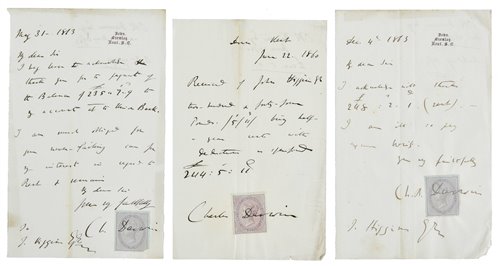
.jpg)
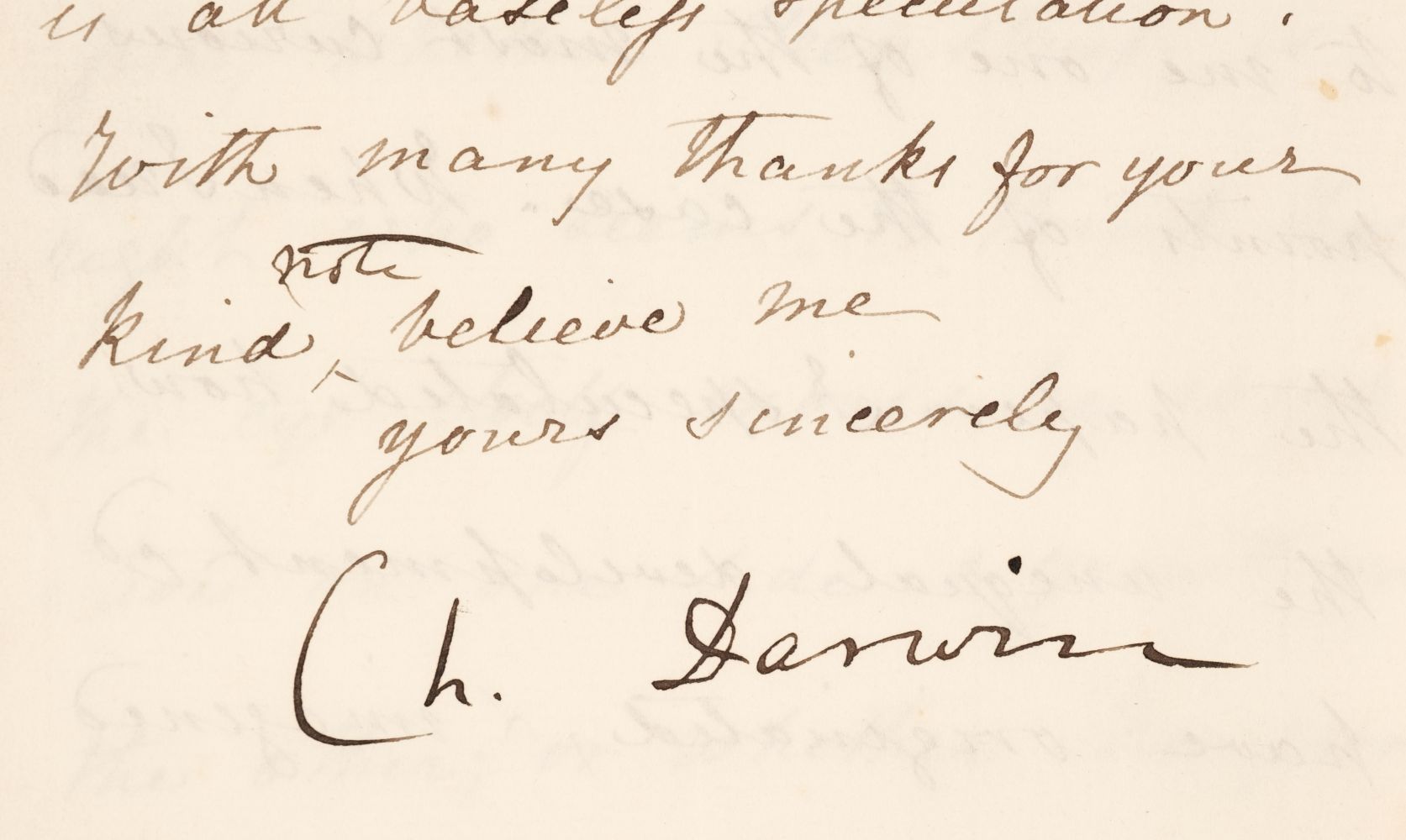


.jpg?w=400)
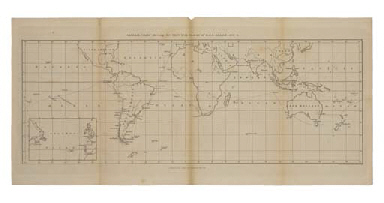
.jpg?w=400)
.jpg)
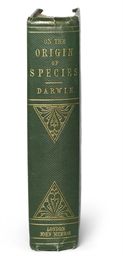
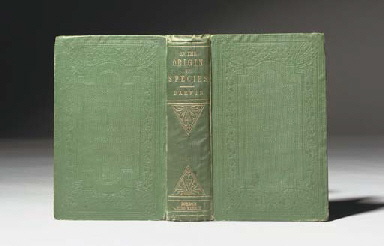
.jpg)
.jpg)
.jpg)
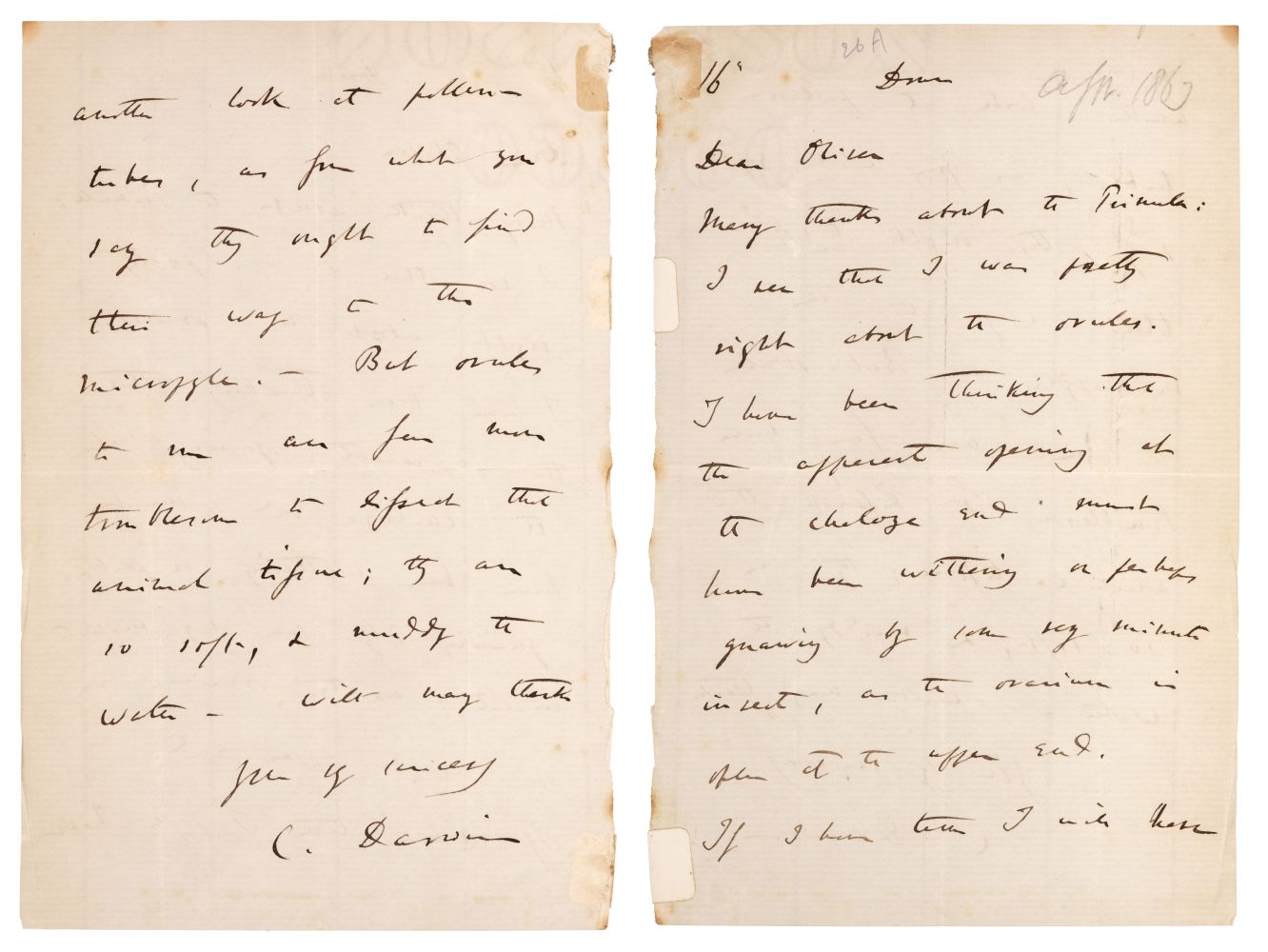
Try LotSearch and its premium features for 7 days - without any costs!
Be notified automatically about new items in upcoming auctions.
Create an alert